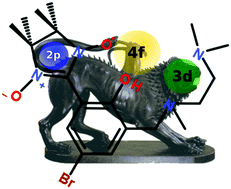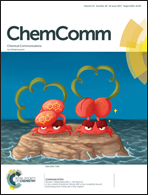A chimeric design of heterospin 2p–3d, 2p–4f, and 2p–3d–4f complexes using a novel family of paramagnetic dissymmetric compartmental ligands†
Abstract
End-off bicompartmental ligands bearing a nitronyl–nitroxide arm have been designed for synthesizing various heterospin molecular systems. These ligands can selectively interact with 3d and 4f metal ions, leading to 2p–4f, 2p–3d, and 2p–3d–4f complexes. The magnetic properties of the 2p–4f and 2p–3d–4f complexes have been investigated and rationalized by theoretical calculations.



 Please wait while we load your content...
Please wait while we load your content...